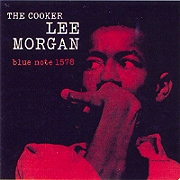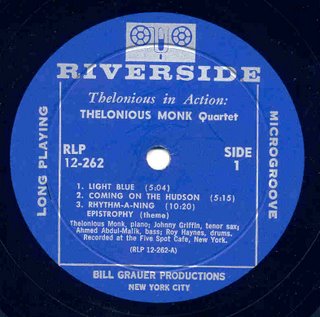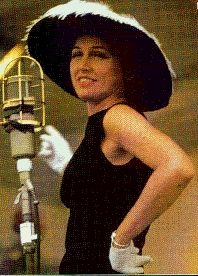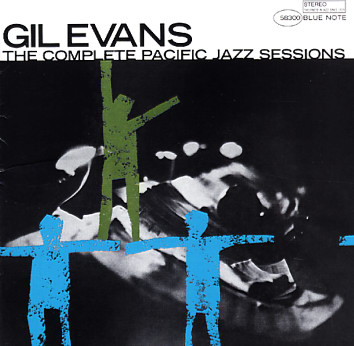Lee Morgan

In 1957 Lee Morgan recorded the LP The Cooker with his Quintet for Blue Note. Born in 1938 it means that Lee was only 19 years old. The musicians of this quintet are Lee Morgan tp, Pepper Adams on the baritone sax, Bobby Timmons at the piano, Paul Chambers bass and Philly Joe Jones on drums. The recordings took place in Hackensack, New Jersey in the Rudy Van Gelder Studios 29th of September 1957.
 I was surprised by this strong set played by such a young musician, only 19 years old. I have only one example of a previous set in my collection, City Lights, that was recorded one month earlier and featured Lee Morgan with Curtis Fuller and George Coleman.
I was surprised by this strong set played by such a young musician, only 19 years old. I have only one example of a previous set in my collection, City Lights, that was recorded one month earlier and featured Lee Morgan with Curtis Fuller and George Coleman. It is said that the young trumpet player was the successor of Clifford Brown, who died a year earlier aged 25 in a car accident.
Lee Morgan, who was shot at the age of 34, started his carreer in the orchestra of Dizzy Gillespie, where he played for two years ( 1956-1958). A few months after the dead of Clifford Brown Lee made his first recording for Blue Note, making the LP Lee Morgan Indeed, reissued as Presenting Lee Morgan.
The Cooker session was his 6th production for Blue Note as a leader - a great start ( He made also one LP for Savoy ( titled A-1 ), one day after his debut LP Lee Morgan Indeed.)
This flying start as a
 jazz trumpet player reminds me to the careers of Wynton Marsalis and Roy Hargrove. Roy made his debut album aged 20 and played at North Sea Jazz Festival in The Hague (The Netherlands) as a youngster.
jazz trumpet player reminds me to the careers of Wynton Marsalis and Roy Hargrove. Roy made his debut album aged 20 and played at North Sea Jazz Festival in The Hague (The Netherlands) as a youngster.I was hit by the fast version of Just One Of Those Things with a great part for Pepper Adams.
This weekend two famous baritone players, Gary Smulyan ( Thad Jones - Mel Lewis Orchestra ) and Jan Menu ( Jazz Orchestra of the Concertgebouw) will perform with Rein De Graaff Trio at Porgy en Bess Jazzclub in Terneuzen ( southwest part of the Netherlands.).
I hope to enjoy some good bariton by Gary Smulyan in the Pepper Adams tradition and Jan Menu as a rebirth of Mullligan.
I let you know.
I found a film fragment of a 1958 concert: I Remember Clifford (Lee Morgan-Art Blakey Jazz Messengers). Enjoy it.
Keep swinging
Hans Koert
You can contact me at keepswinging@live.nl
Nederlands ( To the English translation )

De Blue Note LP The Cooker van het Lee Morgan Quintet dateert van 1957. Lee Morgan, geboren in 1938 was toen dus nog maar 19 jaar oud. Hij speelt hier samen met Pepper Adams op de bariton sax, Bobby Timmons op de piano, Paul Chambers op bas en Philly Joe Jones op drum. De opnamen vonden plaats op 29 september 1957 in de Rudy van Gelder Studio in Hackensack NJ (USA).

Ik werd verrast door de kwaliteit van het spel, van deze jonge 19 jarige trompetspeler. Ik heb in mijn verzameling één oudere opname van hem, City Lights, die een maand eerder opgenomen werd, met Curtis Fuller en George Coleman.
Er wordt wel beweerd dat Lee de een jaar eerder bij een auto ongeluk omgekomen 25 jarige trompetist Clifford Brown heeft vervangen.
Lee, die zelf ook op jonge leeftijd overleed ( hij werd op zijn 34ste doodgeschoten na een optreden) begon zijn carriere in het orkest van Dizzy Gillespie, waar hij ten tijde van de opnamen van The Cooker speelde. (1956- 1958).
Een paar maanden na het droevige ongeval met Clifford Brown had Lee zijn eerste eigen opnamen gemaakt op het Blue Note label, uitgebracht als Lee Morgan Indeed (later opnieuw uitgebracht als Introducing Lee Morgan).
De LP The Cooker is al weer zijn zesde opnamesessie voor Blue Note - Wat een start. Hij maakte één dag na zijn Blue Note debut album ook een plaat voor Savoy, toepasselij k getiteld A-1.
k getiteld A-1.
Deze vliegende start als jazztrompetist doet me denken aan de carrieres van Wynton Marsalis en Roy Hargrove. Roy maakte zijn debut album met eigen groep op 20 jarige leeeftijd en trad toen al op op het Northsea Jazz Festival in Den Haag.
Ik heb genoten van het snel gespeelde nummer Just One Of Those Things, waarin een grote rol weggelegd is voor Pepper Adams, de bariton saxofonist.
Dit weekend spelen in de Porgy en Bess Jazzclub in Terneuzen twee bariton saxofonisten van naam Gary Smulyan ( Thad Jones - Mel Lewis Orchestra) en Jan Menu, onze Nederlandse Gerry Mulligan ( Jazz Orchestra of the Concertgebouw) samen met het Rein de Graaff Trio.
Ik hoop op een grandioos concert door Gary Smulyan in de Pepper Adams traditie en Jan Menu in de huid van Mulligan
Natuurlijk laat ik nog weten of dat gelukt is.
Ik vond een schitterende stukje film uit 1958 van het nummer I Remember Clifford (Lee Morgan-Art Blakey Jazz Messengers) . Geniet er van !!
Keep swinging
Hans Koert
Je kunt me bereiken via keepswinging@live.nl































